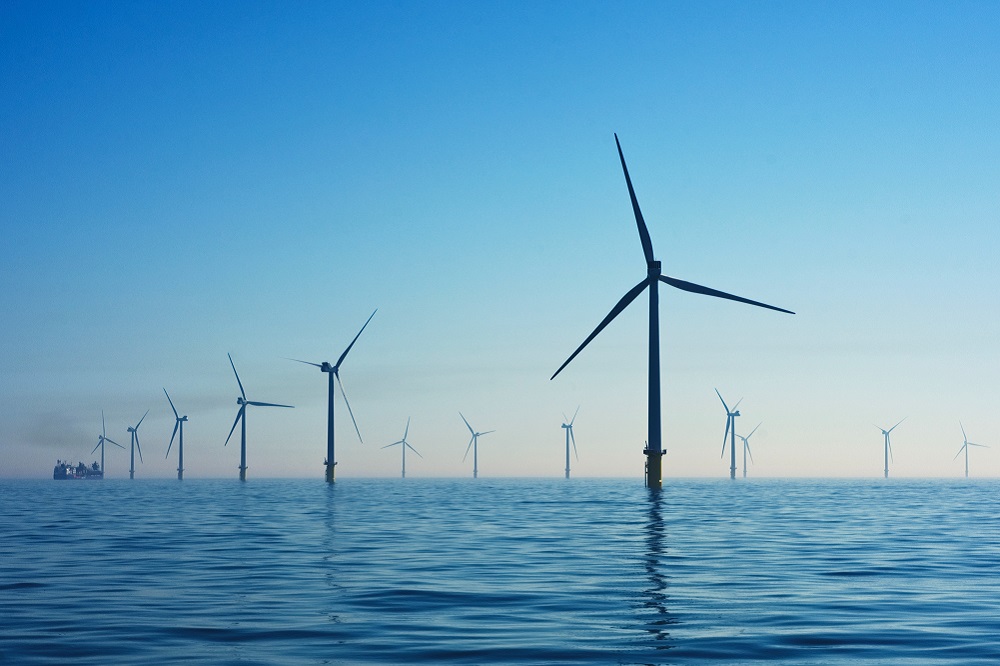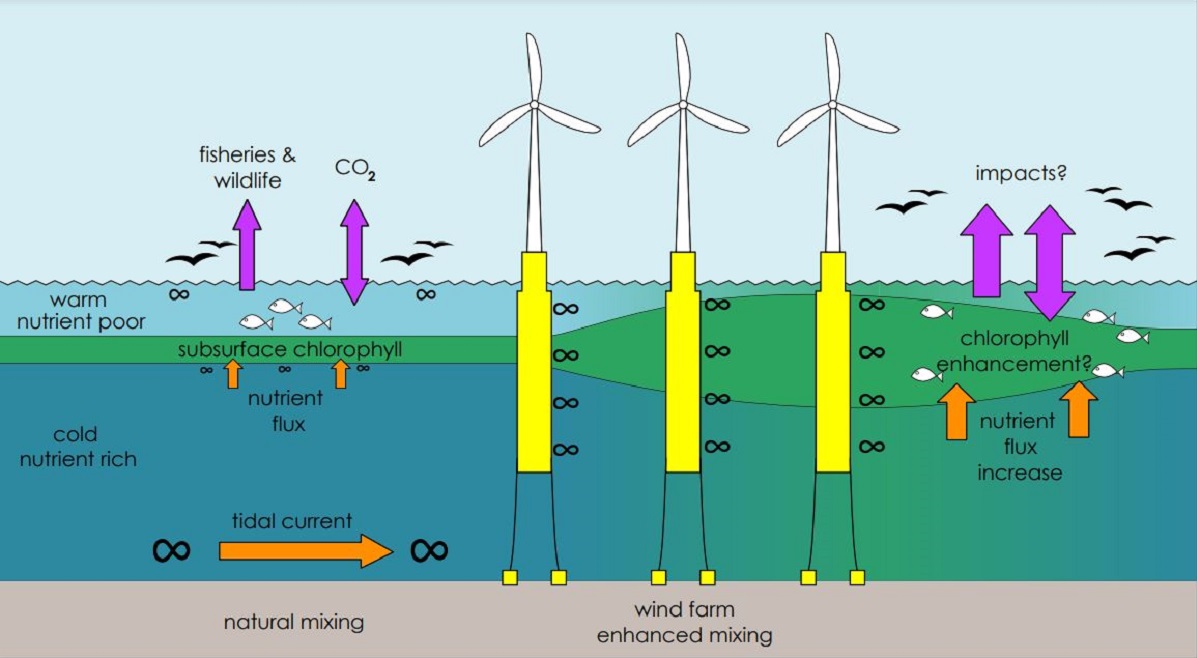Call for ‘urgent’ research into impact of offshore wind farms on marine food chain

University researchers have said that there needs to be “urgent” research into the impact of floating wind farms on the marine ecosystem.
There are fears that turbulence caused by floating wind farms may mix warm and cooler layers of water in the sea, which could have a knock-on effect on sea life.
Oceanographers from Bangor University are calling for new research to be done into the environmental impact of turbulence caused by tidal flow past floating deep-water wind farms.
The UK has the most offshore wind energy production globally, with current power generation meeting one third of the national demand (~10GW).
Five new wind farm sites in the Celtic Deep off Wales have already been identified by Crown Estate, which could together provide energy for four million homes.
But there needs to be certainty of the positive and negative effects their presence could have on the surrounding environment, Dr Ben Lincoln of Bangor University – who has co-authored a new paper on the issue – said.

“Our shelf seas are fully mixed during winter, but during summer months the deeper regions stratify, with a warm surface layer overlying the cooler water below,” he said.
“This triggers a phytoplankton bloom which can be seen from space and forms the base of the marine food chain, supporting fish, seabirds and whales.
“During summer months following the spring bloom, phytoplankton growth is supported by nutrients stirred up from below by turbulence associated with wind and tides. This turbulence also mixes oxygen down to the deep water, where it is required for other key biological processes.”
‘Deeper understanding’
New floating offshore wind turbines in the deep shelf seas have been identified as a major pathway toward achieving NetZero for the UK. The technology involved has extended growth targets – the current target to produce 50GW by 2030 is an increase of 67% on the target set just 12 months ago.
Most of the world’s wind farms are conveniently located in the shallow waters near the shore. However, new offshore sites at a depth of over 50 metres are very different in nature to the shallow coastal sites that have been used so far.
New research is needed to fully understand how siting varying types of wind turbines could affect not only the seabed, but the waters, and everything they contain.
“Environmental assessments for the shallow shelf seas have focused on wildlife using or living within the affected areas. The difference with the deeper seas is that the fundamental functioning of the seas themselves could be affected,” Dr Ben Lincoln added.
“Turbulent mixing determines the timing and rate of the food supply on which marine ecosystem and key species rely. Flow past deep water wind farms will introduce ‘anthropogenic’ or man-made turbulence, and increase mixing.
“This fundamental change could lead to significant regional impacts, which must be assessed. However, impacts are not necessarily negative, with the potential to enhance productivity and offset the impact of increasing stratification due to climate change.
“There’s no doubt that this growth in renewable energy is essential to meet global 2050 Net Zero commitments.
“However, we urgently need a deeper understanding of the dynamics involved in placing offshore wind farms, from a single unit to large arrays, and how that will affect the functioning of our shelf sea ecosystems.
“This understanding will help guild the planning of new wind farms to ensure they have a positive impact on the ecosystem”.
Support our Nation today
For the price of a cup of coffee a month you can help us create an independent, not-for-profit, national news service for the people of Wales, by the people of Wales.





Could have done with a lot more scientific insights before embarking on the land based wind farm projects too, especially those more recent developments where sizes are well above dimensions supported by any science.
“where sizes are well above dimensions supported by any science”
Well I’m intrigued. What does this statement mean?
On the other hand preventing bottom trawling/dredging must be to the advantage to life on the sea bed…aerofoil design may help minimise turbulence…lucky we have so many oceanographers on hand…over to you Captain ‘Madog’…